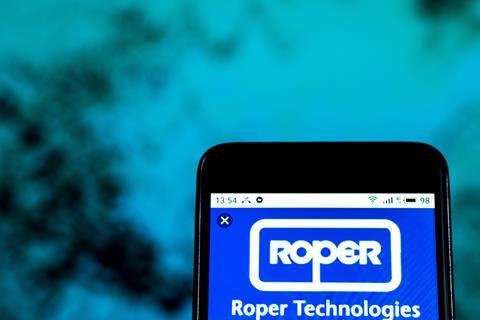In the first part of our look at M&A activity in the broadcast sector, IBC365 examines some of the notable acquisitions amongst the vendors and their implications.

The level of this year’s effervescent merger and acquisitions activity amongst the vendors in the broadcast sector was set at the tail end of last year, with Rohde & Schwarz’s acquisition of Pixel Power; one of those alliances that involves two equally established names within the industry. Sensibly, the name remains (albeit with a ‘Pixel Power Ltd. - A Rohde & Schwarz Company’ rebadging), as do some of the main figures involved in the success of PP over the years; CEO James Gilbert and CTO Nick Wright both staying with the company.
As well as its core business in branding, graphics, automation, master control and playout, Pixel Power’s development of virtualised environment and software-defined technologies seems to have been one of the largest lures for Rohde & Schwarz. The company is looking to further embrace cloud technologies moving into the future and Pixel Power has so far proved adept at taking its physical technologies and giving them the as-a-service treatment. Terms were undisclosed.
Driven by tight margins and the continual need for investment, the OB market has been consolidating for some years now. Thus, France’s EMG purchasing Telegenic’s assets in full, including a fleet of 15 OB trucks (primarily HD units with some newer UHD vehicles) was little surprise. The UK company has around 100 staff, and initial noises surrounding the deal are that Telegenic will remain independent and not be merged with other EMG assets.
- Read more: Disney completes $71.3bn Fox acquisition
EMG already owns a decent slice of the European OB industry, including CTV, Aerial Camera Systems and Broadcast RF in the UK; United in The Netherlands and Videohouse in Belgium. As well as a UK business with an enviable track record for working at the forefront of new broadcast formats, notably stereo 3D and UHD, with Telegenic EMG also acquires the bridgehead it had recently established in the US. EMG is on the record as wanting to grow its business outside its European base, though while the potentially lucrative sports and events US market is a target it also says that it is not currently [our italics] looking to acquire there.
Late February saw the closing of Inside Secure’s deal to acquire Verimatrix, establishing a combined company that is concentrated on security from the entertainment market all the way through to a growing emphasis on the IoT and connected cars. The final amount that Inside Secure is paying for the company won’t be known until some point in Q2 2019, by which time it will probably be just shy of $150m. The result is suddenly a much larger company operating in the video and DRM sector, which could have disruptive implications for quite a competitive market, albeit one that has its fingers in many other pies at the same time too.
In April, Dallas-based Ooyala’s complicated recent ownership continued with Brightcove’s swoop for its Online Video Platform business completing. This came a mere four months after the Ooyala management had bought the company back from Australian telco owners Telstra, who had in turn snapped it up in 2014. Telstra’s attempt to leverage Ooyala technology to launch its own streaming services and digital ad business failed, however, and in February 2018 it wrote-down the Ooyala assets and retreated into a concentration on its telco business.
- Read more: Telco and media M&A: What happens next?
The M&A challenge
While it is business as normal for Brightcove, albeit with a client roster that now includes Tribune Media, Turner, the PGA Tour, not to mention “substantial portions” of Ooyala’s staff across engineering, support and sales, the OVP sale leaves Ooyala with just its Flex Media Platform to focus on (it had already quietly sold the ad-tech business at the end of 2018). Flex is a set of video management tools that follow content along the entire production workflow from commissioning to analysis, and while not perhaps as headline-grabbing as the previous business, Ooyala claims it is seeing 100% growth in what it describes as “a green-field opportunity” and has signed Turner and HBO on to the platform.
For all that success, the amounts involved in the deals are instructive. Telstra bought Ooyala for $500m. Ooyala sold the OVP business to Brightcove for $15m. Key takeaway? The streaming world is not an easy place to make money.
Key takeaway? The streaming world is not an easy place to make money.

Roper Technologies’ acquisition of Foundry (nee The Foundry) is almost an exact reverse of that situation, with the value of the company seeming to rise impressively through the years every time the company is sold. Roper bought the VFX software specialist for a staggering £410m ($522m at current exchange rates), which given that the press release announcing the deal suggests Foundry has an annual revenue of $75m seems rather a lot. But, as Devoncroft notes, the previous times the company changed hands were for $254m (2015), $95m (2011), and $6.4m (2007); all in all, a trajectory that is very much going in the right direction.
One of the bigger surprises of the usual M&A activity that centres around NAB every year was Vizrt buying NewTek, but it was also one that made a lot of sense under the hood. While it is still far too early to refer to NewTek’s NDI technology for IP-based production as even a de facto standard, it has made impressive inroads into the market despite other protocols being developed by much larger companies. Its purchase (for an undisclosed sum) gives not only gives Viz a shortcut into building IP production capabilities into its own extensive range of production tools, but also the opportunity to shape what looks to be a rather impactful protocol. NewTek president and CTO, Dr Andrew Cross, has assumed the role as president of R&D of the combined company. And you can already see the way that NDI is heading; NDI 4, released a week later as NAB started, adding support for multi-camera editing.
Meanwhile, still underway is the proposed acquisition by Singapore Technologies Engineering Ltd (ST Engineering) of Belgian satcom equipment vendor Newtec in a €250 million all cash transaction. This is another land grab of a potentially significant future technology, Newtec having been involved in recent successful tests of 5G backhaul over a Low Earth Orbit (LEO) satellite with satellite operator Telesat, an unnamed tier 1 European mobile operator, and the University of Surrey. Tests included 8K video.
It is interesting to note that a lot of the deals being done recently are for privately held companies, suggesting the headwinds of the global economy are making the idea of scale ever more attractive. Telestream acquired test and measurement specialist Tektronix just after NAB with the aim of strengthening that side of its business as well as gaining a foothold into new markets and territories and a larger sales infrastructure. It’s also worth noting the corporate nature of the deal, which basically saw private equity firm Genstar Capital (Telestream’s owner) effectively entering into a co-ownership deal with Fortive (Tektronix’ owner). Telestream CEO, Scott Puopolo, has taken charge of the combined company. Showing that it’s a sector with a fair degree of interest, Intel also announced that it had acquired Omnitek just after the show.
Other smaller mergers and acquisitions that have taken place so far in 2019 worth mentioning include Ross Video’s purchase of the Piero Sports Graphics business from Red Bee Media which helps cement its growth in the live event arena; the completion of Nokia’s divestment of its IP video business to the Volaris Group; Mediapro’s acquisition of immersive audio company Vision; and, in recent days, tech-focused private equity firm Francisco Partners, who has previously owned the likes of Grass Valley, teamed up with IGP Capital to buy IP-video contribution specialist LiveU from its existing shareholders with the aim of investing to accelerate growth.
- Read more in part two: M&A: Broadcasters search for scale
- Read more in part three: M&A: Current drivers and future directions
M&A: Vendor consolidation continues
- 1
 Currently reading
Currently readingM&A: Vendor consolidation continues
- 2
- 3















![Adeline Platform Help[64]](https://d3dh6of9cnaq4t.cloudfront.net/Pictures/100x67/0/6/9/30069_adelineplatformhelp64_996092_crop.png)







No comments yet